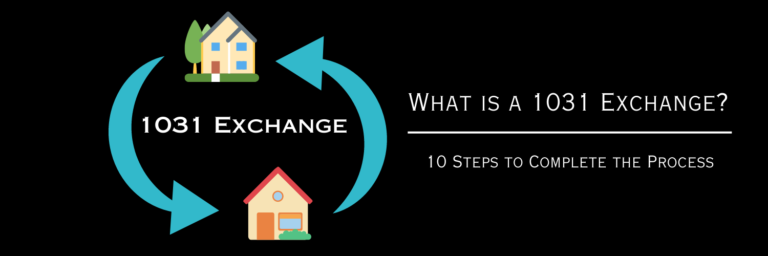
Real estate investment is an effective way to grow wealth over time, but it’s not without its challenges. One of the most significant obstacles for investors is the tax burden that comes with selling a property. Fortunately, there is a tool available to real estate investors to help reduce their tax liabilities: the 1031 exchange.
What is a 1031 Exchange?
A 1031 exchange is a tax-deferred exchange that allows real estate investors to sell one property and acquire another without having to pay capital gains taxes on the sale. This means that if an investor sells a property, they can use the proceeds to purchase another property of equal or greater value and defer paying taxes on the capital gains from the sale of the first property.
The name “1031 exchange” comes from Section 1031 of the Internal Revenue Code, which outlines the rules for this type of exchange. To qualify for a 1031 exchange, both the property being sold, and the property being acquired must be held for investment or business purposes.
To qualify for a 1031 exchange, the following rules must be followed:
- The properties involved in the exchange must be held for investment or business purposes.
- The properties must be like-kind, meaning they are of the same nature or character.
- The investor must identify potential replacement properties within 45 days of the sale of their relinquished property.
- The investor must close on the replacement property within 180 days of the sale of their relinquished property.
- The investor cannot receive any cash or other non-like-kind property in the exchange.
How Does a 1031 Exchange Work?
To complete a 1031 exchange, the investor must follow a series of steps and meet specific requirements set forth by the IRS. Here is a step-by-step guide on how to complete a 1031 exchange:
Step 1: Decide to sell using the 1030 Exchange
Not every sale or purchase is worth doing the 1031 Exchange. Discuss with your financial advisor if this method is beneficial for you or not. Find out about the requirements, countdown times, and other options on the table
Step 2: List the Property for Sale
List your existing property for sale, and make sure potential buyers are aware of the use of 1031 Exchange.
Step 3: Look for a replacement property
Important to remember – From the minute your property is sold, the countdown for the purchase begins, therefore, it is crucial to start looking for potential deals right away
Step 4: Work with an experienced professional with good reputation
Step 5: Negotiate and accept an offer
Paperwork must state the use of a 1031 Exchange by the seller and buyer must comply.
Step 6: Close on the sale of your existing property
Closing company or attorney will handle the process. Funds will be transferred to the intermediary’s bank account, not the seller’s
Step 7: Identify (up to) potential three property
The clock is ticking, and you have 45 days to find replacement properties. You are required to buy 95% of the identified properties (or a combined value less than 200% of the sale of the previous property)
Step 8: Get the property under contract
You can also get under contract on all 3 properties with contingency clauses to back out on the properties you choose not to purchase.
Step 9: Work with title company or closing attorney to close
The title or closing company will handle the process, making sure of a smooth transaction. Your professional advisor will guide you through the process.
Step 10: Repeat the process as many times as you wish
You can use 1031 Exchange as many times you want, buying assets and building serious portfolio and wealth.
In conclusion, though it is a bit more complicated, the 1031 Exchange is extremely beneficial for any investor looking to build a big rental portfolio and create tremendous wealth, while avoiding capital gains taxes. Don’t forget to consult with a professional and know all the requirements before making the decision to do so. Good luck!

